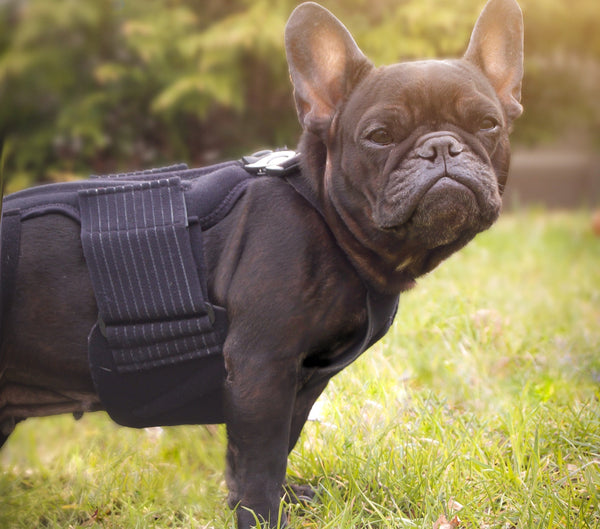My wife and I thought about having our dog Daisy undergo surgery on her right leg when she ruptured her knee CCL only nine months after having TPLO surgery on her left knee. We are so glad we decided to try a less invasive option for Daisy, who is approaching 12 years old, and have Animal Ortho Care create a custom brace for her. In the four months since starting to wear the brace, Daisy has improved greatly, with a minimal to no limp as she enjoys her daily walks. Thanks for the support you provided and we would gladly recommend the Animal Ortho Care custom orthotics as a viable option for anyone concerns about their pet undergoing the expense and long healing process following surgery.
Hi Edward,
This is fantastic news! We appreciate the kind words! This melts our hearts to hear. We are so happy to see that Daisy is enjoying her walks again and is showing improvements! Such a sweet photo and LOVE the pink brace option!! Please let us know if you ever have any questions regarding Daisy's brace, happy to help!
Wishing you a joyful season,
Animal Ortho Care
It’s for my granddaughter’s dog. We didn’t think about the fact that she is disabled and can’t get it on with her right hand. So it’s not used very much. We keep trying. But I think it’ll work on it
Hi Robert,
We are sorry to hear about your granddaughter! We hope you or someone can assist to help with putting the brace on Gerald. :) We appreciate you taking the time to write us a review. Please let us know if you ever have any questions about the brace or if we can help in any way, happy to assist!
Best,
Animal Ortho Care
Our sweet boy had surgery 2 years ago for an ACL tear on his left leg. He did not handle anesthesia very well. This year his right leg needed surgery and at now 10 years old we knew it was not an option. We contacted AOC, received our kit, made a cast and sent it in. A few weeks later our custom brace arrived! Red, white and blue! Loved being able to choose the design. Our sweet Cooper has been on the go ever since! When it’s time to put the brace on, he puts his right leg back. He knows it helps him be mobile. Best decision we have ever made.
Hello,
We are so happy to hear that we could be another option for Cooper! We appreciate you sharing a video and photo. So sweet! We hope Cooper is loving the brace and doing well! Thank you for the kind words. Please let us know if you ever have any questions about the brace, happy to help!
Best,
Animal Ortho Care
My little lady has the most awkward measurements. Finding a brace to help with her back has been a journey. The Haute Lil Back Bracer actually fits her! She’s a little dog with big dog measurements so nothing was fitting properly until now. I’m so thankful!
Hi Crystal,
This is so wonderful to hear that our brace worked for your little lady! We hope you see improvement with your dog in both support and pain relief the more that the brace is used. Let us know if you have any questions down the line, always happy to help!
Best,
L'il Back Bracer








Cory Brannon
Author